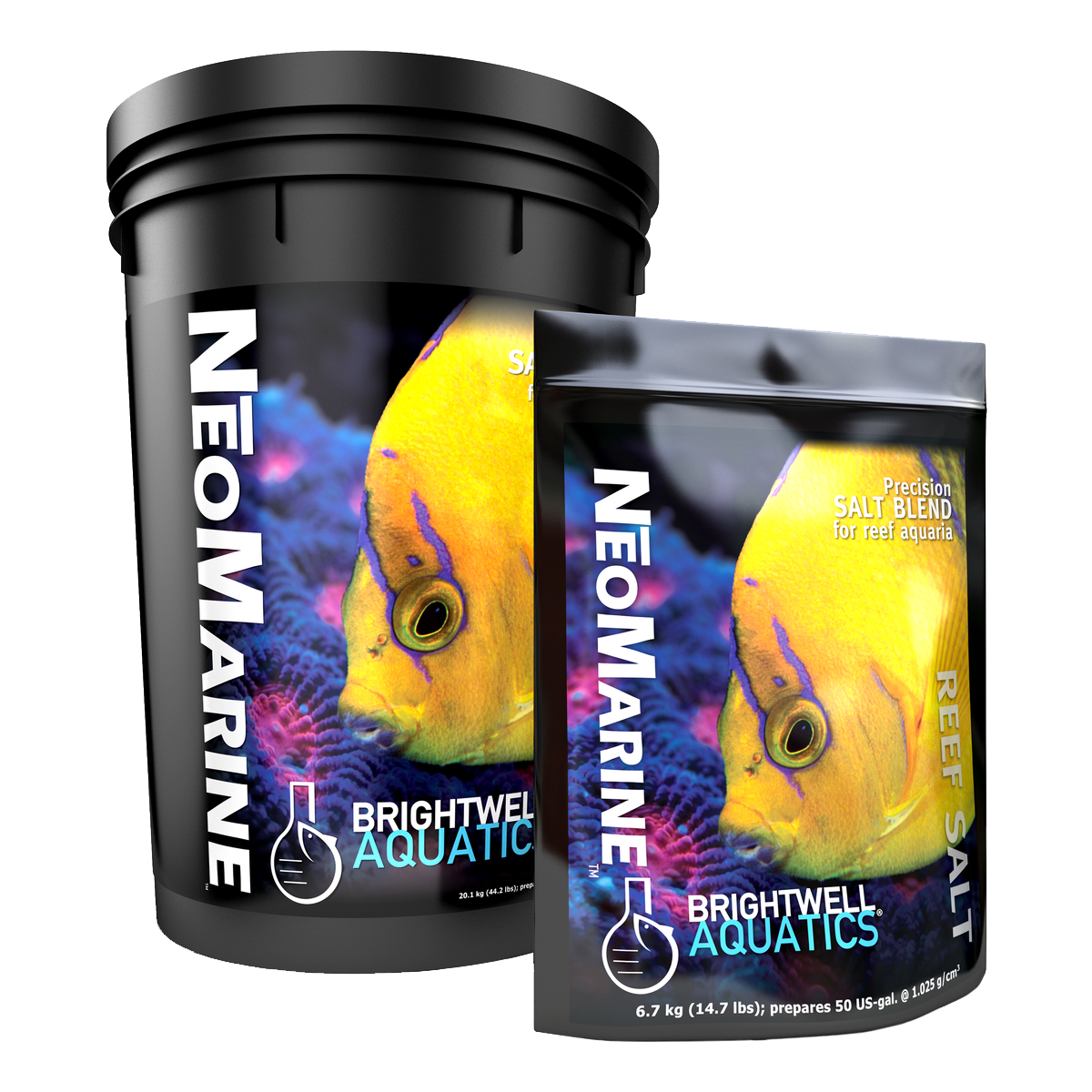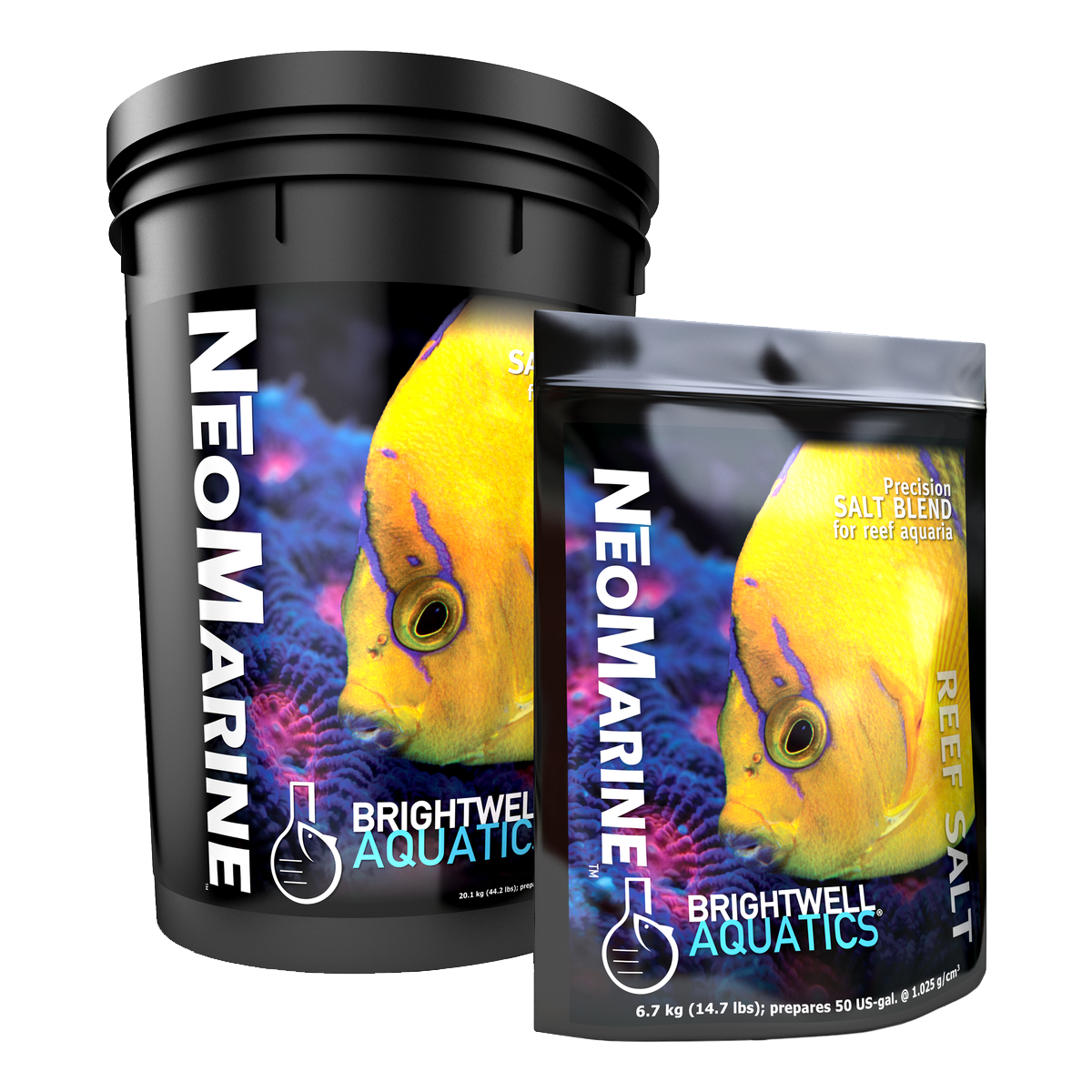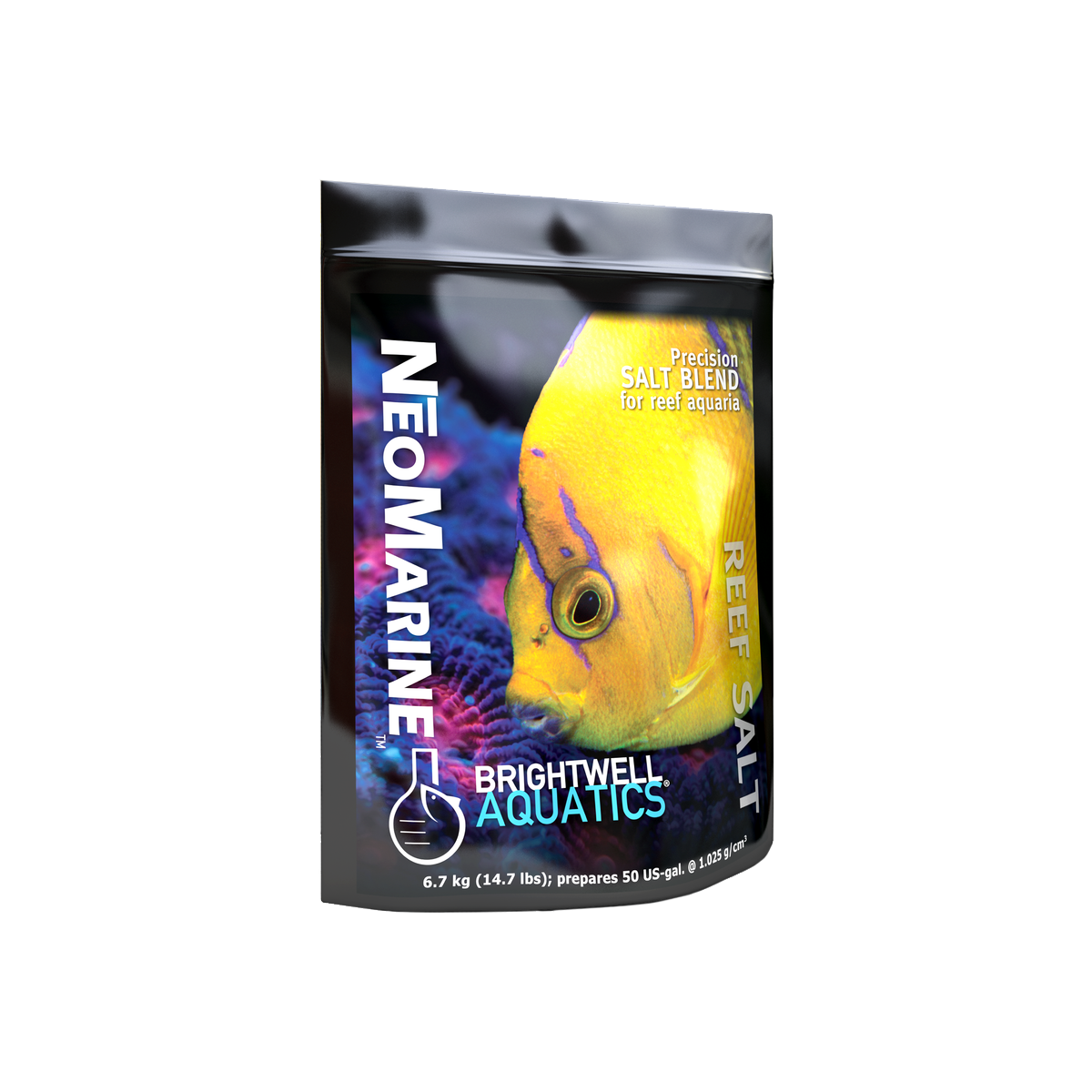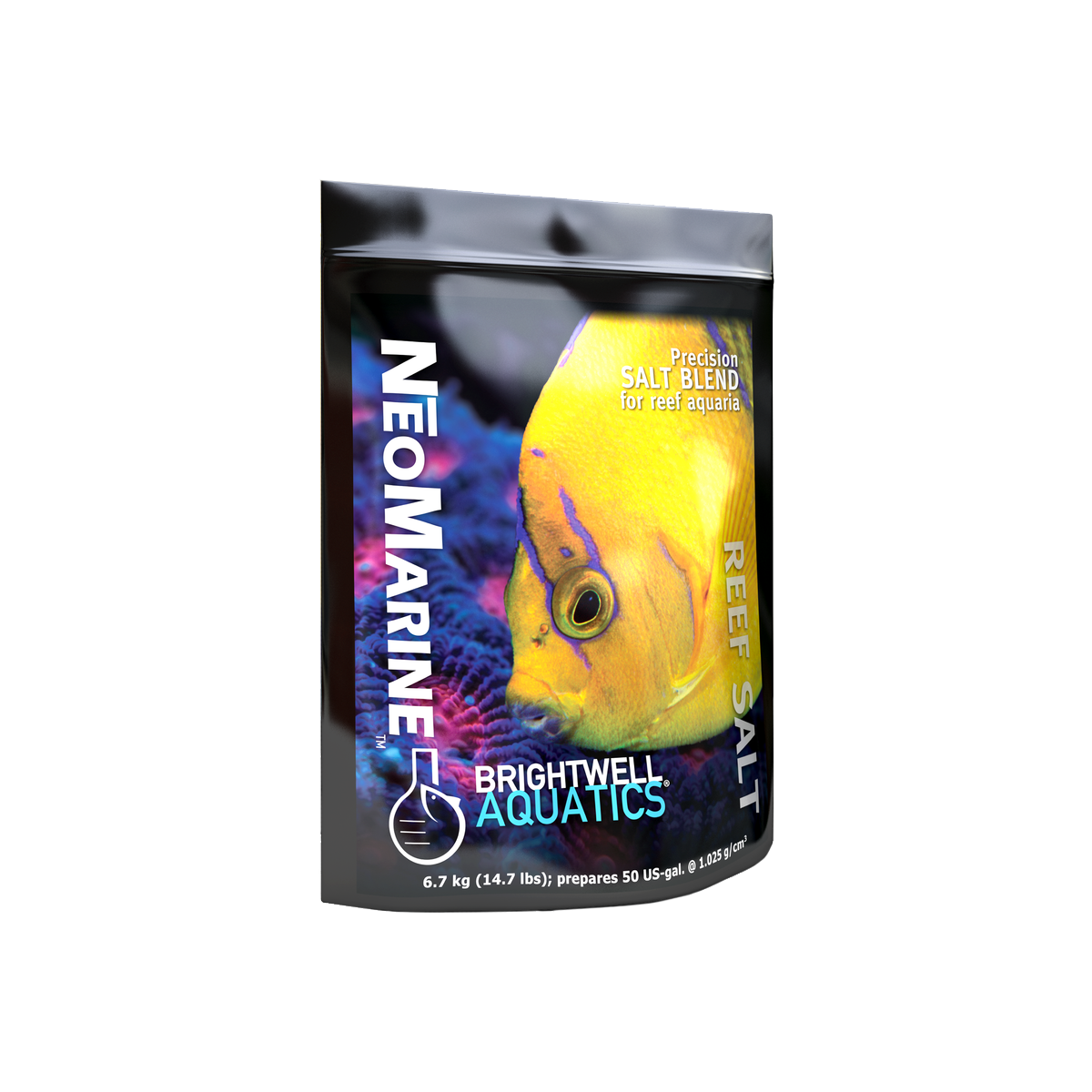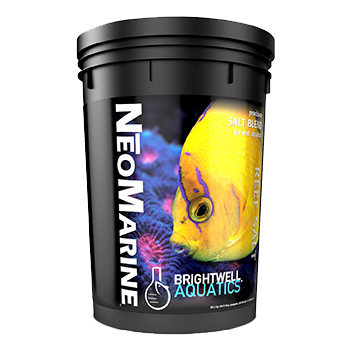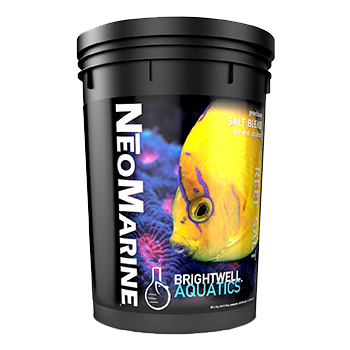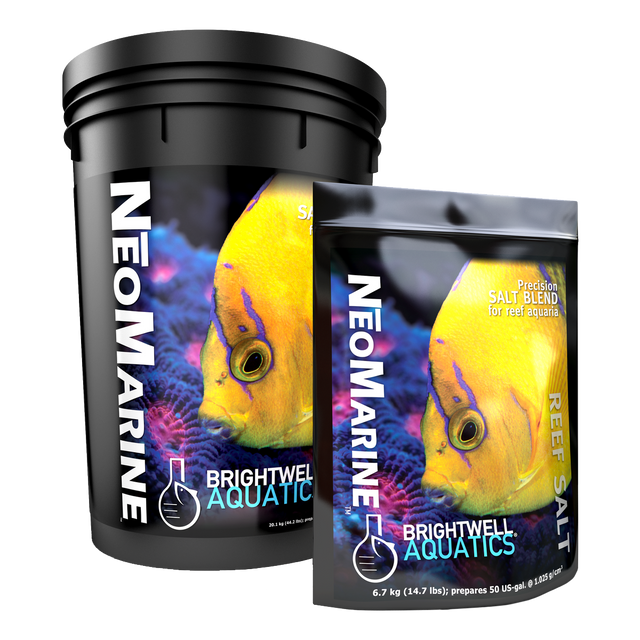NeoMarine Salt Mix
NeoMarine Salt Mix - 16 Gallon Bag is backordered and will ship as soon as it is back in stock.
Couldn't load pickup availability
NēoMarine - Precision Salt Blend for Reef Aquaria
- Precision-formulated to replicate the natural seawater ratios of every major element, as well as all non-conservative minor and trace elements.
- Extensively researched and tested over a multi-year period, with a formulation based on current understanding of Marine Chemistry and Marine Biology as they pertain to the husbandry of all marine aquaria
- Creates a marine environment so chemically similar to natural seawater in all important respects that aquarium inhabitants are not likely to discern any difference between water prepared with NēoMarine and filtered natural seawater from tropical reef waters.
- 134 g per 1 US-gallon (3.785 L) of purified water yields a specific gravity of ~1.025 g/cm3, with a pH of ~8.30 and alkalinity of ~7.5 dKH.
- Manufactured by Brightwell Aquatics in our production facility (not outsourced) under the strictest standards of quality. Every batch is lot numbered and sampled for quality control.
- Utilizes a production process that promotes particle size uniformity and a dry, homogenous salt blend.
What’s in NēoMarine
- Anhydrous-only forms of major elements
- Average Mg, Ca, K, and Sr concentrations of 1,290-, 413-, 399-, and 8 ppm, respectively
- All non-conservative minor and trace elements found in seawater
- Sufficient salt to reconstitute purified water of the stated package volume to 1.025 g/cm3
What’s not in NēoMarine
- Anti-caking agents
- Vitamins, amino acids, and other unnecessary organic substances
- Hydrated forms of major elements such as magnesium and calcium
- Saltwater evaporite (e.g. dehydrated saltwater)
- Ammonia
- Phosphate
Mixing Instructions
Do not mix in an aquarium containing live organisms. NēoMarine creates slight heat when mixed into the water; therefore, do not handle dry NēoMarine with wet hands. NēoMarine may have a slight sulphurous odour when the container is first opened; this is a result of the use of anhydrous magnesium chloride and will dissipate.
It is strongly recommended to use Reverse Osmosis Deionized water when mixing NeoMarine Salt. To mix saltwater with a specific gravity of 1.025 g/cm3 add approximately 1/2 cup (134.5g or 4oz) of NeoMarine Salt per gallon of RODI water and adjust as necessary by adding more salt or water to reach desired specific gravity.
Allow the freshly made seawater to mix for 24 hours with a submersible powerhead or pump. Ensure that the water temperature matches that of the established aquarium (use a submersible heater if necessary). Allow water to mix, preferably while being aerated, until pH becomes completely stable, indicating that gas equilibrium has been achieved. It is strongly recommended that at least 24-hours of mixing be allowed to pass before adding the water to an established aquarium; this extra time enables gas formed during the salt dissolution to escape, further stabilizing alkalinity and pH. Note that water temperature and mixing rate will influence the speed with which the salt goes into the solution. It is recommended that 10 - 20% of the total water volume in an aquarium system be replaced every 7 - 10 days; this helps maintain proper water chemistry and consequently benefits aquarium inhabitants.
How was NeoMarine formulated?
Brightwell Aquatics reverse-engineered saltwater by creating an extremely-precise calculation method that takes into account all necessary chemical characteristics of the salts that provide desirable elements. Natural seawater concentrations of all major elements, as well as the minor and trace elements that are considered to be non-conservative (e.g. they are utilized in biological and chemical processes that occur in marine environments), were used as the design template. We then tested several combinations of ingredients that ultimately provided identical concentrations of each important element (except chloride, which was the only ion that varied in concentration); they were specifically interested in assessing the dryness and homogeneity of the blend, as well as the solubility and speed with which the blend completely dissolved into solution. For what it’s worth, the final formulation provides all major, minor, and trace elements at concentrations within 0.000001% (with the exception of chloride) of their respective average natural seawater concentrations. They strive to reproduce this formulation with their production process.
How was NeoMarine tested?
Once they had arrived at a final formulation, they tested it in multiple research systems for a period of three years. Their research systems house all conceivable types of marine fishes, cnidarians, bivalves, gastropods, echinoderms, crustaceans, coelenterates, and poriferans, as well as ancillary organisms such as suspension-feeding worms, macroalgae, seagrasses, and mangroves. They have exclusively been using their salt formulation on every system during the three-year testing process, with remarkable success: several coral spawning events have taken place, fishes have reproduced, and the coloration and apparent health of all residents in the systems is very good. Additionally, NeoMarine has been successfully used in many large coral farms such as New Dawn Aquaculture.
How is NeoMarine manufactured?
The exact process is deemed proprietary, but what they will divulge is that the process is such that a homogenous particle size and blend are created in a clean, climate-controlled atmosphere within their own production facility. Rather than producing several tons of NēoMarine in each batch, they create batches of modest-size that enable them to maintain maximum quality control and ensure the most homogenous blend; the more ingredients that are used, the more difficult it is to create homogeneity throughout the finished product (their formulation makes use of nearly 40 ingredients, for reference), so producing gigantic batches of salt is not an option.
How long does it take for NeoMarine to dissolve?
On average, 75°F water that has the proper amount of NēoMarine added to increase the specific gravity to 1.025 g/cm3 will clear in less than 15-minutes with vigorous mixing, however, when mixing a large batch (e.g. ≥50-gallons) all at once it may take longer for the mix to completely clear. Two things factor into the speed that a salt mix will clear in water of a standardized temperature: the degree of mixing taking place within the mixing vessel, and the solubility of the various salts that are present in a mix. Regarding the former, it can be said that the speed of dissolution is directly related to the amount of water movement in the vessel; that is, faster water movement decreases the time required for the mix to completely dissolve and clarify, assuming that samples are prepared using the same salt blend. Companies selling sea salt blends have been hyping the speed with which their salt dissolves completely for so long that aquarists now use this as a benchmark to judge the quality of a salt mix; ironically, salts that mix immediately into water are typified by low concentrations of magnesium, calcium, and/or the use of a large percentage of highly-soluble hydrated ingredients that drag unwanted substances into their final product (see the following section). Honestly, saltwater should mix overnight in order to allow all intermediate gasses formed during the dissolution process to escape and pH and alkalinity to become stable. If the newly-mixed saltwater doesn’t become crystal-clear within 30-seconds, who cares?
Payment & Security
Payment methods
Your payment information is processed securely. We do not store credit card details nor have access to your credit card information.

